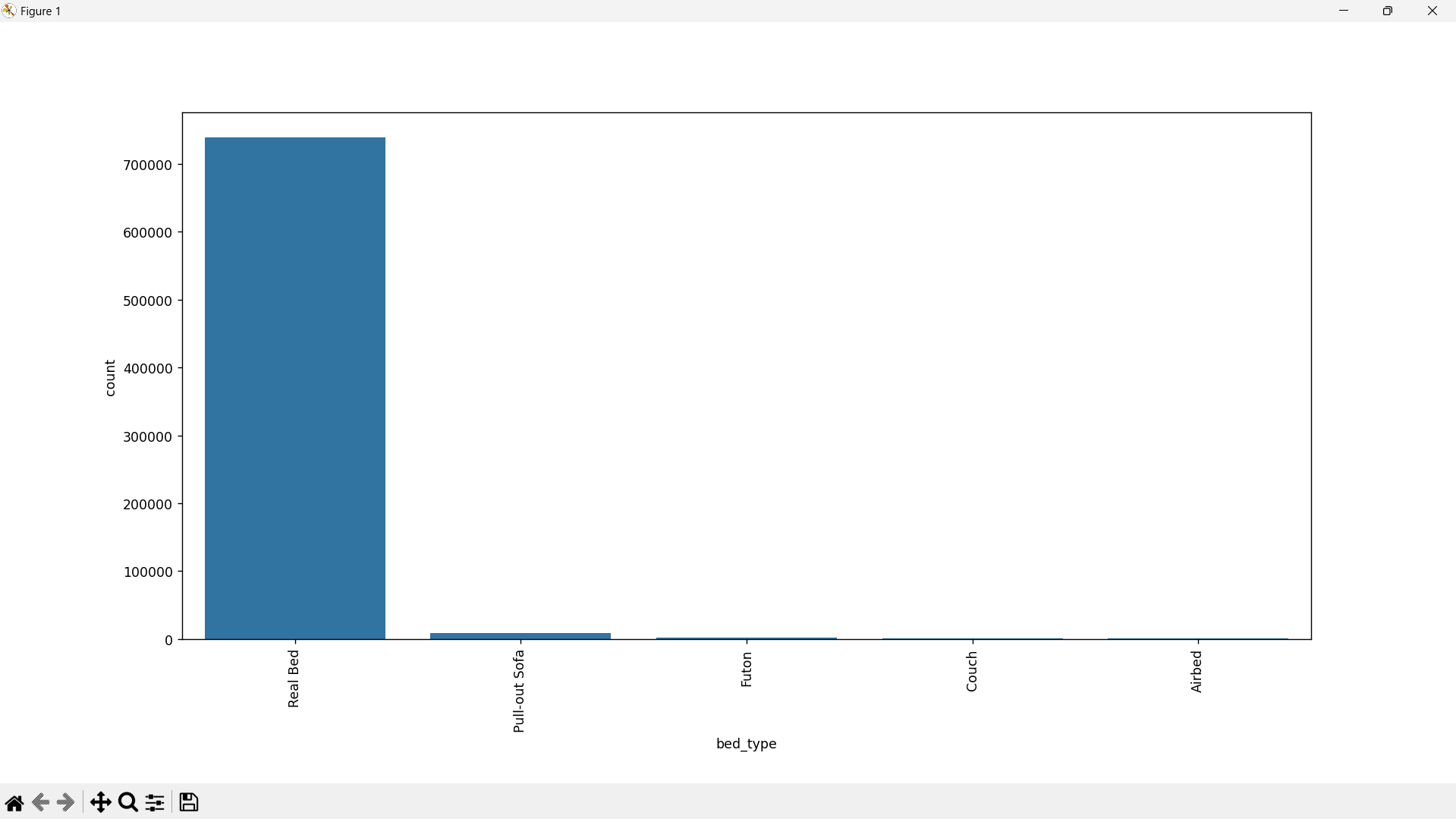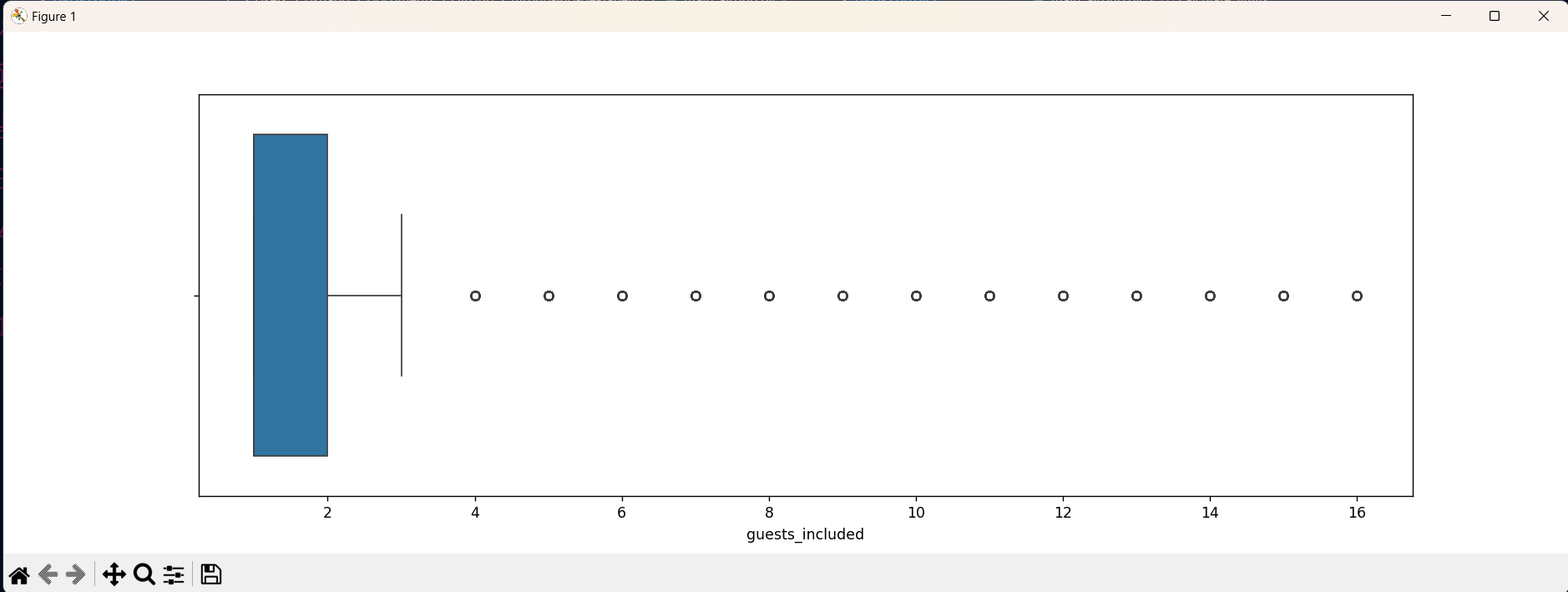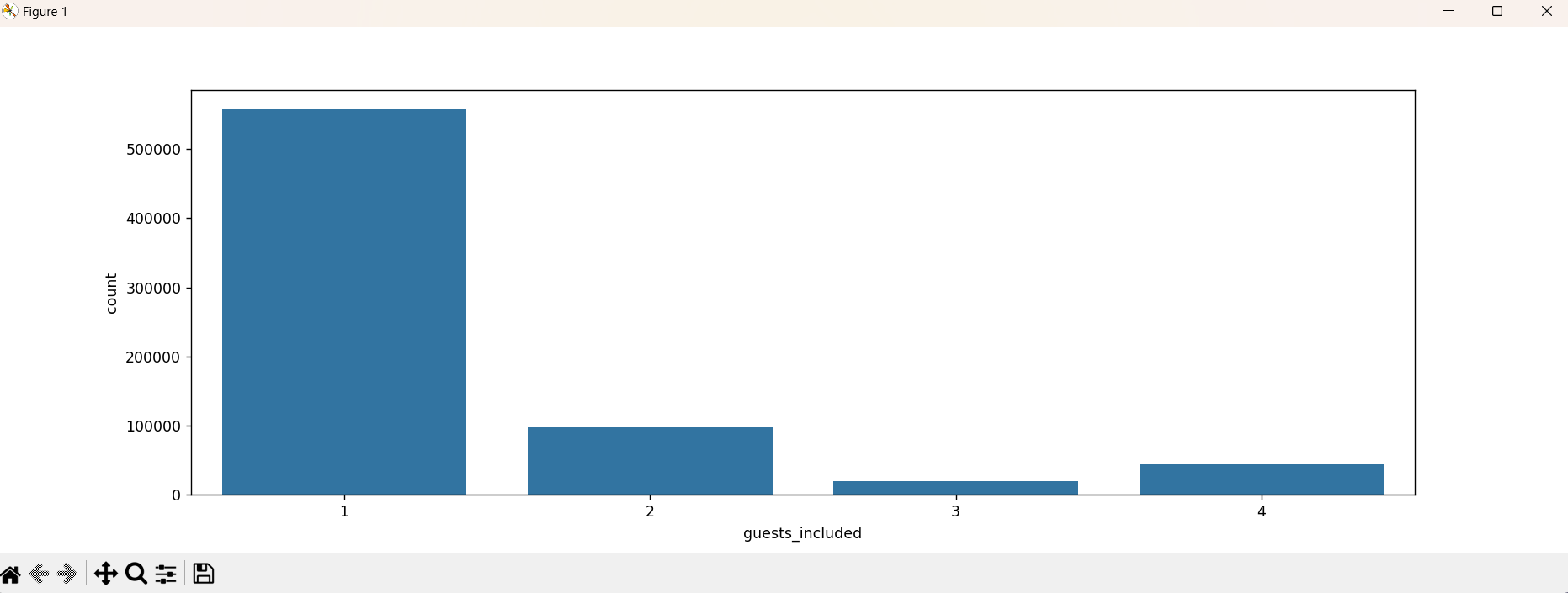Creating graphs
Now we will create four functions, each for visualizing a different type of graph and test them with the 'guests_included' column (except with the bar graph for string data):
-
Bar Graph for string data
def bar_graph_string(main_dataframe_collumn_name) : plt.figure(figsize=(15, 5)) plt.subplots_adjust(bottom=0.3) bar_graph = sns.countplot(x=main_dataframe_collumn_name, data=main_dataframe) bar_graph.tick_params(axis='x', rotation=90) plt.show() bar_graph_string('bed_type')
Now, the graphs below will only work properly for NUMERICAL data, as they utilize limits determined by quartiles. Also, notice how it will be necessary to pass the whole column as a parameter (ex: main_dataframe['guests_included']) instead of only passing the string name of the column as done in the bar graph for strings that recieved just the name string 'bed_type'.
-
Box plot
def box_plot(main_dataframe_collumn) :
plt.figure(figsize=(15,5))
plt.subplots_adjust(bottom=0.3)
sns.boxplot(x = main_dataframe_collumn)
plt.show()
box_plot(main_dataframe['guests_included'])

- Histogram
def histogram(main_dataframe_collumn) :
plt.figure(figsize=(15, 5))
plt.subplots_adjust(bottom=0.3)
sns.histplot(x = main_dataframe_collumn, kde=True)
plt.show()
histogram(main_dataframe['guests_included'])

- Bar graph
def bar_graph(main_dataframe_collumn) :
plt.figure(figsize=(15, 5))
plt.subplots_adjust(bottom=0.3)
ax = sns.barplot(x = main_dataframe_collumn.value_counts().index, y = main_dataframe_collumn.value_counts())
ax.set_xlim(calculate_limits(main_dataframe_collumn))
plt.show()
bar_graph(main_dataframe['guests_included'])
